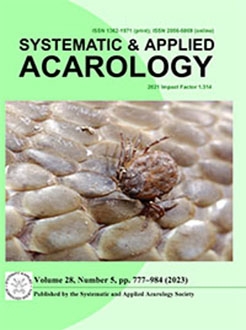Many previous descriptions of Phytoseiidae (Acari: Mesostigmata) species lack some important morphological characteristics including the number of dorsal solenotomes (gland pores). However, the importance of the presence or absence of a single pair of solenostomes to identify two distinct species in some phytoseiid genera, such as Kampimodromus Nesbitt and Neoseiulus Hughes has previously been confirmed by molecular studies in several cases. Neoseiulus marginatus (Wainstein) was originally described from Kazakhstan, a country located in Central Asia, based on the specimens collected from herbaceous plants. It was subsequently reported and redescribed from a series of Western Palearctic countries. However, the material first redescribed from Crimea and thereafter from Armenia, Greece, Israel, and Turkey, by having gd5 solenostomes, is distinct from the original N. marginatus described by Wainstein. Indeed, our examinations of its type specimens confirmed that gd5 pores are consistently absent in the type series of N. marginatus. Therefore, this species is redescribed and illustrated based on the female lectotype. In addition, N. pseudomarginatus sp. nov., a widely distributed species in the Western Palearctic countries, which has seven pairs of solenostomes is described as a new taxon for science. Furthermore, our examinations of the type specimens of N. polyporus (Wainstein) indicated that it should be considered as a junior synonym of N. marginatus, as already suggested in earlier studies.
How to translate text using browser tools
12 May 2023
Neoseiulus pseudomarginatus sp. nov., a new species of predatory mites (Acari: Phytoseiidae) continuously misidentified as Neoseiulus marginatus (Wainstein) from the Mediterranean countries
Ismail Döker,
Theodoros I. Stathakis,
Leonid A. Kolodochka
ACCESS THE FULL ARTICLE

Systematic and Applied Acarology
Vol. 28 • No. 5
May 2023
Vol. 28 • No. 5
May 2023
gland pores
new species
predatory mites
solenostomes
taxonomy





